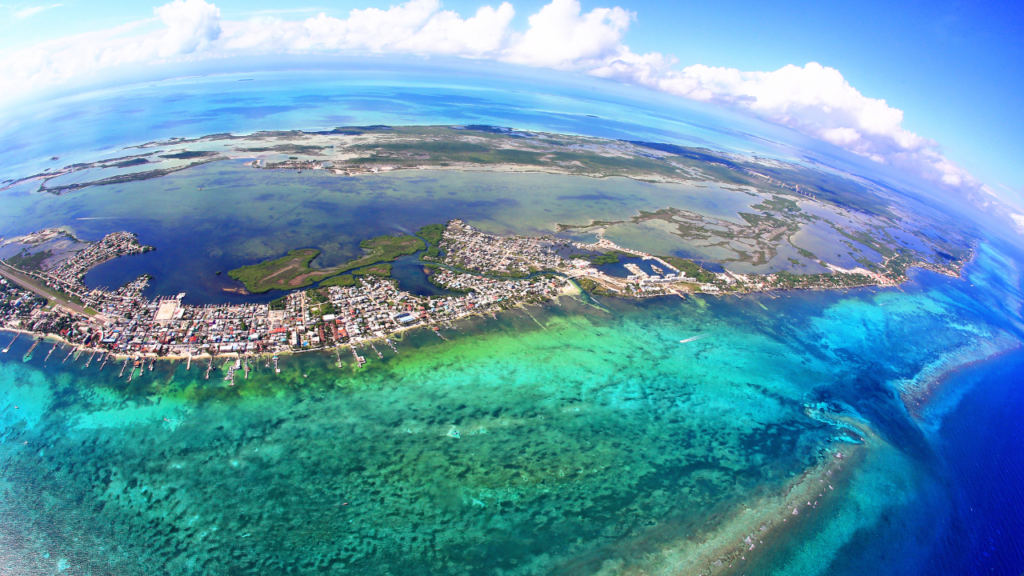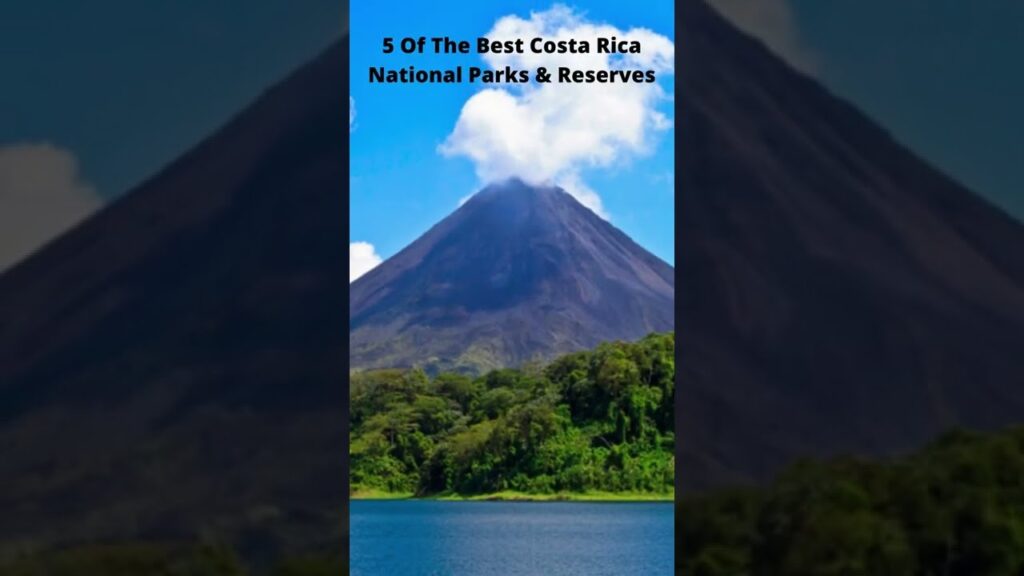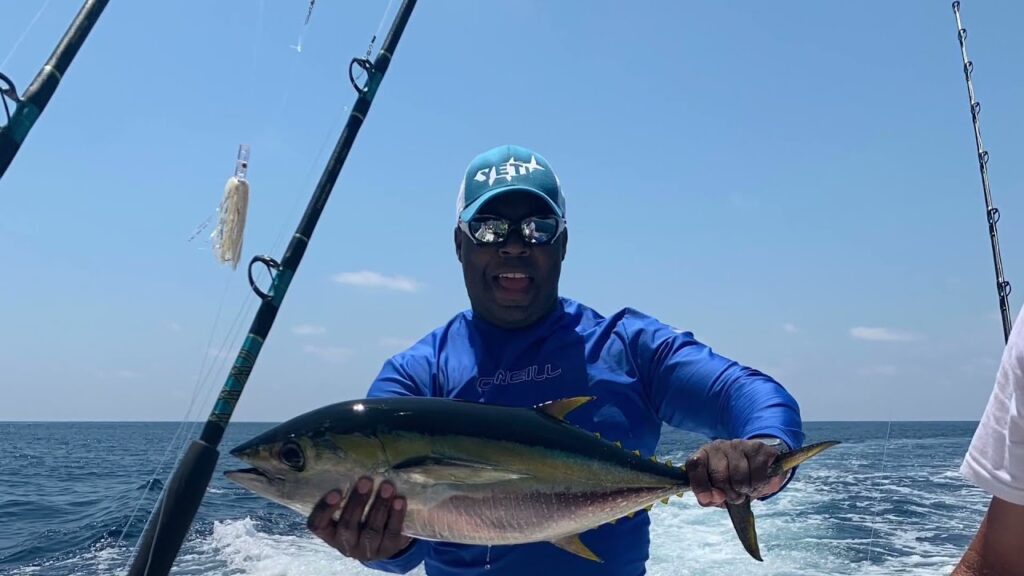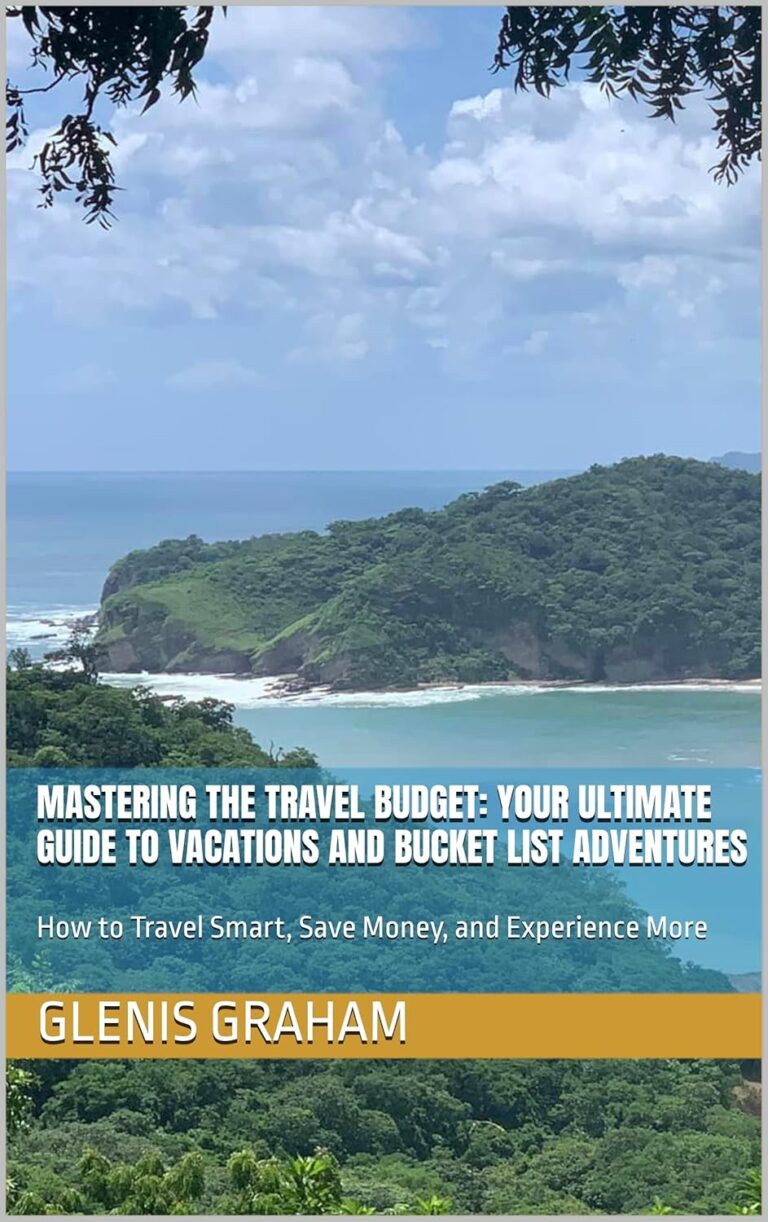Discovering the Belize Barrier Reef
The Belize Barrier Reef is one of the world’s most significant natural wonders, stretching for over 190 miles along the coast of Belize. Part of the larger Mesoamerican Barrier Reef System, it stands as the second-largest reef system globally, right after Australia’s Great Barrier Reef. This underwater paradise is not just a vibrant ecosystem but a critical site for biodiversity, marine research, and conservation efforts. In this article, we’ll explore the rich history, unique ecosystem, and global significance of the Belize Barrier Reef.
Introduction to the Belize Barrier Reef
Location and Size of the Reef
The Belize Barrier Reef is located off the eastern coast of Belize, in the Caribbean Sea. Spanning approximately 300 kilometers, it serves as a haven for a wide array of marine species, from colorful corals to large predators like sharks. Its proximity to Belize makes it a key tourist attraction, drawing thousands of visitors yearly for snorkeling, diving, and exploration of its crystal-clear waters.
History and Formation
Geological Origins of the Belize Barrier Reef
Formed over millions of years, the Belize Barrier Reef’s origins trace back to the buildup of coral polyps. As these tiny organisms died, their calcium carbonate skeletons formed layers that eventually created the massive reef structures seen today. The reef’s unique formation is attributed to a combination of tectonic activity, sea level changes, and the steady growth of coral species that thrive in the warm Caribbean waters.
Human Interaction Over the Centuries
The Belize Barrier Reef has been part of human history for centuries. Ancient Mayan civilizations relied on the coast and its resources for sustenance, and over time, the reef played a role in the maritime activities of European explorers and settlers. Today, it remains a vital resource for the local population, especially for fishing and tourism industries.
Ecosystem and Biodiversity
Marine Species Found in the Belize Barrier Reef
The reef is home to an extraordinary variety of marine life. Over 500 species of fish, 100 species of coral, and hundreds of invertebrates make the reef their home. Large marine creatures such as sea turtles, dolphins, and manatees are frequently spotted, adding to the reef’s allure for nature lovers and researchers alike.
Coral Species
Coral species in the Belize Barrier Reef are incredibly diverse. These range from hard corals like staghorn and elkhorn, known for their branching structures, to soft corals that add to the reef’s vibrant underwater landscape. Corals form the foundation of this ecosystem, providing shelter and feeding grounds for countless marine species.
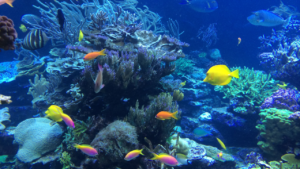
Fish, Sharks, and Rays
Fish diversity in the reef is equally astounding, with species ranging from tiny, colorful parrotfish to majestic groupers and predatory sharks. Nurse sharks and rays can often be seen gliding effortlessly through the water, a sight that captures the imagination of many tourists.
The Role of Mangroves and Seagrass Beds in the Reef Ecosystem
Mangroves and seagrass beds play a critical role in supporting the reef. Acting as nurseries for young marine species, these habitats provide protection and food resources. They also help filter water, reducing sedimentation and pollution on the reef.
The Great Blue Hole
Formation of the Great Blue Hole
One of the most iconic features of the Belize Barrier Reef is the Great Blue Hole, a giant marine sinkhole near Lighthouse Reef. This natural phenomenon was formed thousands of years ago when sea levels rose and submerged ancient caves. Its deep blue color and perfect circular shape make it a popular destination for divers.
Diving in the Great Blue Hole
Diving in the Great Blue Hole is considered a bucket-list experience for avid divers. The sinkhole plunges to depths of over 120 meters, offering a unique diving environment where you can see giant stalactites, unusual geological formations, and sometimes encounter hammerhead sharks.
Marine Life in the Great Blue Hole
Though the Great Blue Hole is relatively low in coral life compared to the shallower sections of the reef, it hosts various species of fish and large marine creatures. The deep waters are home to different types of sharks, including Caribbean reef sharks and bull sharks.
Conservation Efforts
Environmental Threats to the Reef
Like many reefs around the world, the Belize Barrier Reef faces numerous environmental challenges. Climate change, coral bleaching, and unsustainable fishing practices are all significant threats. Rising sea temperatures have caused mass coral bleaching events, while overfishing disrupts the delicate balance of the ecosystem.
Coral Bleaching
Coral bleaching occurs when corals expel the algae living in their tissues due to stress caused by rising water temperatures. Without these algae, the coral loses its color and, more importantly, its primary food source, leading to large-scale coral death if conditions do not improve.
Overfishing and Tourism Impact
Overfishing has reduced the number of vital species that help maintain the health of the reef. Additionally, irresponsible tourism practices, such as anchoring on coral reefs or touching corals while diving, have damaged parts of the reef.
Local and Global Conservation Initiatives
Various local and global initiatives are in place to help protect the reef. Belize has established marine protected areas to control fishing activities and prevent further damage from human interaction. On a global scale, organizations such as the World Wildlife Fund (WWF) and the Belize Audubon Society work tirelessly to preserve the reef.
The Belize Barrier Reef in UNESCO
Recognition as a World Heritage Site
In 1996, the Belize Barrier Reef was designated a UNESCO World Heritage Site. This recognition highlights the reef’s outstanding universal value as one of the most diverse ecosystems on the planet. The reef’s status as a World Heritage Site has brought greater attention to the need for its protection.
Criteria for UNESCO Listing and Importance
The reef was listed under UNESCO’s criteria due to its biodiversity, unique geological formations, and the presence of endangered species such as the West Indian manatee. This designation also underscores the reef’s importance for scientific research and environmental education.
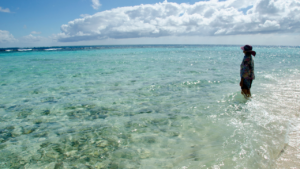
Tourism and the Belize Barrier Reef
Popular Dive and Snorkel Sites Along the Reef
Many parts of the Belize Barrier Reef are ideal for snorkeling and diving. Popular sites include Hol Chan Marine Reserve, the Great Blue Hole, and Ambergris Caye. These locations offer tourists the chance to explore the reef’s underwater beauty while learning about marine conservation efforts.
Sustainable Tourism Practices
Belize has embraced sustainable tourism practices to minimize the impact of visitors on the reef. Many tour operators promote eco-friendly activities, such as catch-and-release fishing and coral-safe sunscreen, to protect the reef for future generations.
Impact of Tourism on Local Communities
Tourism around the Belize Barrier Reef supports the livelihoods of thousands of Belizeans. From tour operators to hotels and restaurants, local communities benefit from the influx of visitors. However, there is a delicate balance between sustaining local economies and protecting the reef’s fragile environment.
Local Culture and the Reef
Influence of the Reef on Belizean Fishing Communities
For centuries, the Belize Barrier Reef has been integral to the livelihoods of local fishing communities. Fishermen rely on the abundance of fish that the reef supports, and many have passed down traditional fishing methods from generation to generation.
Cultural Significance of the Reef to Indigenous Peoples
The reef also holds cultural importance for Belize’s indigenous peoples, who have historically used its resources for food, trade, and ceremonial purposes. Today, there is a growing movement to involve indigenous communities in the conservation efforts of the reef.
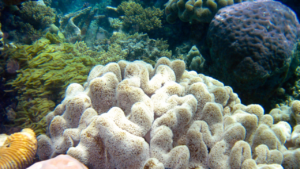
Best Time to Visit the Belize Barrier Reef
Weather Conditions and Seasonal Patterns
The best time to visit the Belize Barrier Reef is during the dry season, from November to April. During this period, the weather is sunny, the waters are calm, and visibility for diving and snorkeling is at its best.
Recommendations for Divers and Snorkelers
Divers and snorkelers should aim to visit during the cooler months to avoid the risk of hurricanes, which are most likely to occur between June and November. Planning a trip around these months ensures better conditions for enjoying the reef’s marine life.
How to Get to the Belize Barrier Reef
Access Points and Local Travel Options
The reef can be accessed from several points along the Belizean coast, with San Pedro, Ambergris Caye, and Caye Caulker being the most popular starting points for tours. From these locations, travelers can take boat trips or private charters to reach the reef.
Boat Tours and Private Charters
Many tour operators offer full-day or half-day excursions to the Belize Barrier Reef. These trips typically include stops at several snorkeling or diving spots, as well as opportunities to see the diverse marine life up close.
Activities Around the Reef
Snorkeling
Snorkeling is one of the most accessible ways to experience the beauty of the Belize Barrier Reef. With shallow waters and calm seas, even novice snorkelers can enjoy the reef’s vibrant marine life.
Scuba Diving
For those looking for a more immersive experience, scuba diving allows adventurers to explore deeper parts of the reef. Diving the Belize Barrier Reef offers the chance to see spectacular coral formations and encounter large marine species such as sharks and rays.
Kayaking and Paddleboarding
In addition to diving and snorkeling, visitors can enjoy kayaking and paddleboarding around the reef. These activities offer a peaceful way to take in the reef’s surroundings while also getting some exercise.
Fishing and Eco-tours
Fishing is another popular activity in the region, with options for both catch-and-release sportfishing and traditional fishing trips. Eco-tours offer educational experiences, where visitors can learn about the reef’s ecology and the importance of conservation.
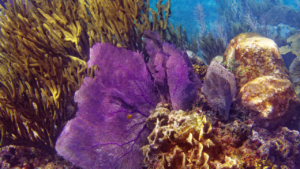
Educational Experiences and Research
Marine Biology and Research Facilities
Belize is home to several marine biology research facilities that study the health and biodiversity of the Belize Barrier Reef. Visitors can participate in guided educational tours or even volunteer with ongoing conservation projects.
Opportunities for Volunteer Work and Citizen Science
There are opportunities for travelers to get involved in conservation through volunteer programs. These programs allow participants to engage in activities such as coral restoration and monitoring marine life, making a meaningful contribution to the reef’s future.
Unique Features of the Belize Barrier Reef
Diverse Coral Formations
The reef’s coral formations are unlike anything found elsewhere. From the vibrant, multi-colored corals of shallow waters to the intricate cave systems beneath the surface, the Belize Barrier Reef offers a unique and unforgettable underwater landscape.
Underwater Caves and Marine Life
Exploring the underwater caves of the reef reveals an entirely new world. These caves are home to many elusive species, and they provide divers with thrilling opportunities to see the reef’s hidden beauty up close.
Future of the Belize Barrier Reef
Climate Change and Its Impact on the Reef
The future of the Belize Barrier Reef depends heavily on how the world addresses climate change. Rising ocean temperatures and acidification pose significant risks to coral health, and without global action, the reef could face irreversible damage.
The Role of Local Communities in Conservation
Local communities play a crucial role in the reef’s conservation. Their efforts, combined with government policies and international support, are essential for ensuring that the Belize Barrier Reef continues to thrive for generations to come.
Frequently Asked Questions (FAQs)
Is the Belize Barrier Reef the largest reef in the world?
No, the Belize Barrier Reef is the second-largest reef system in the world, with the Great Barrier Reef in Australia being the largest.
Can you snorkel if you’re a beginner?
Yes, many parts of the Belize Barrier Reef are perfect for beginner snorkelers. The water is calm, and there are shallow areas where you can observe marine life safely.
What’s the best time to dive in Belize?
The best time to dive is during the dry season, from November to April, when the water is calm, and visibility is optimal.
How do conservation efforts impact tourism?
Conservation efforts ensure that tourism remains sustainable by protecting the reef’s natural beauty and biodiversity, which are major draws for visitors.
What kind of marine life can you expect to see?
You can expect to see a variety of marine life, including colorful fish, sea turtles, nurse sharks, rays, and different species of coral.
How is climate change affecting the reef?
Climate change is causing rising sea temperatures, which lead to coral bleaching. It also contributes to ocean acidification, threatening the delicate balance of the reef’s ecosystem.
![]()

